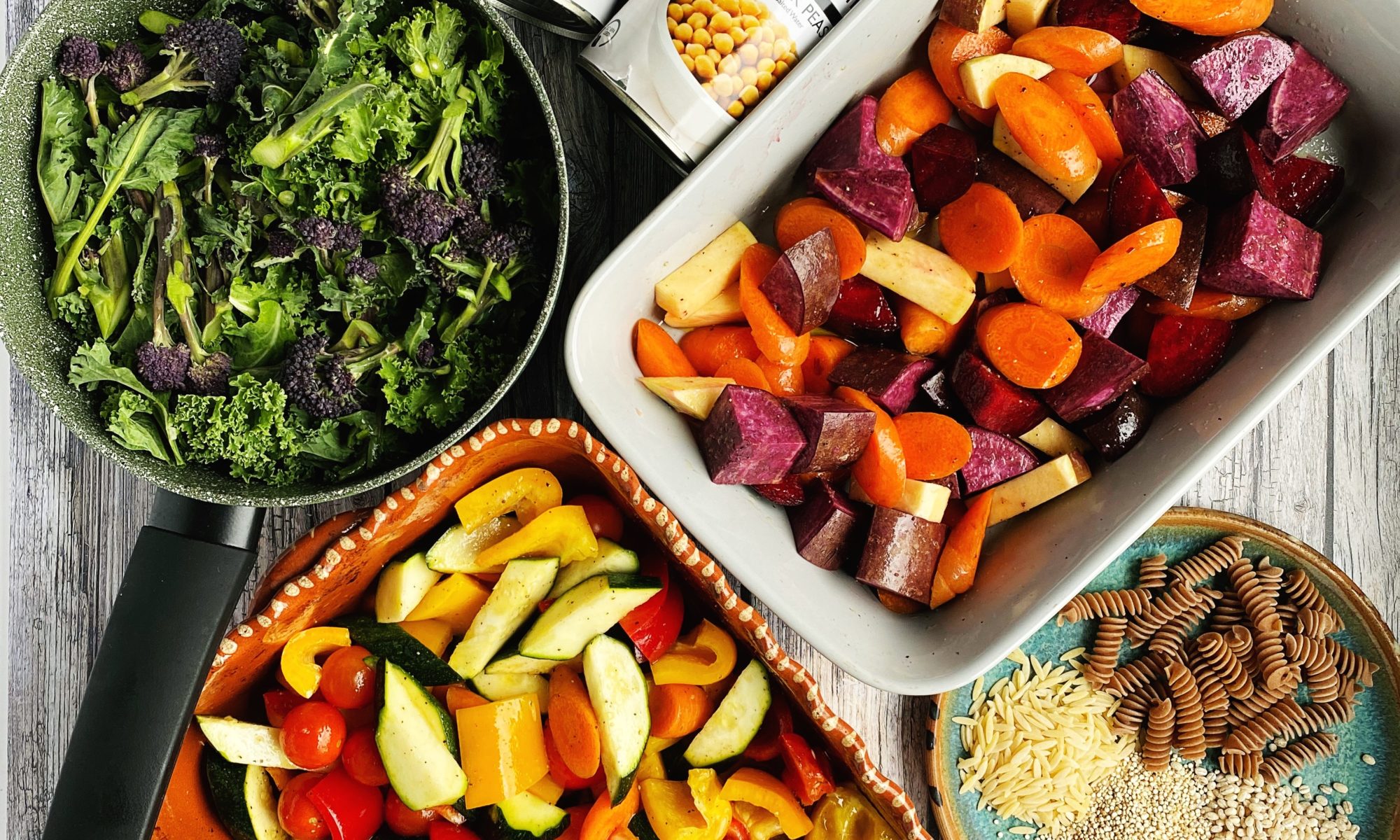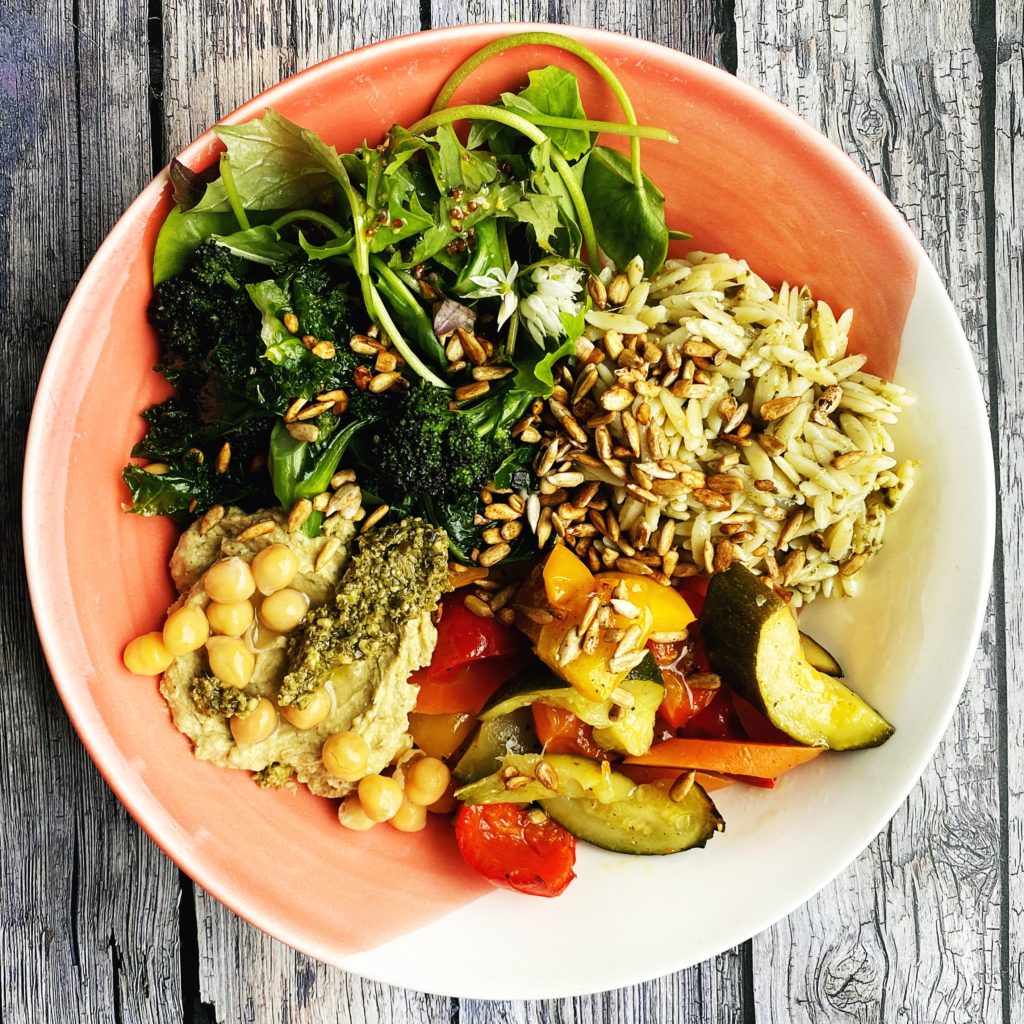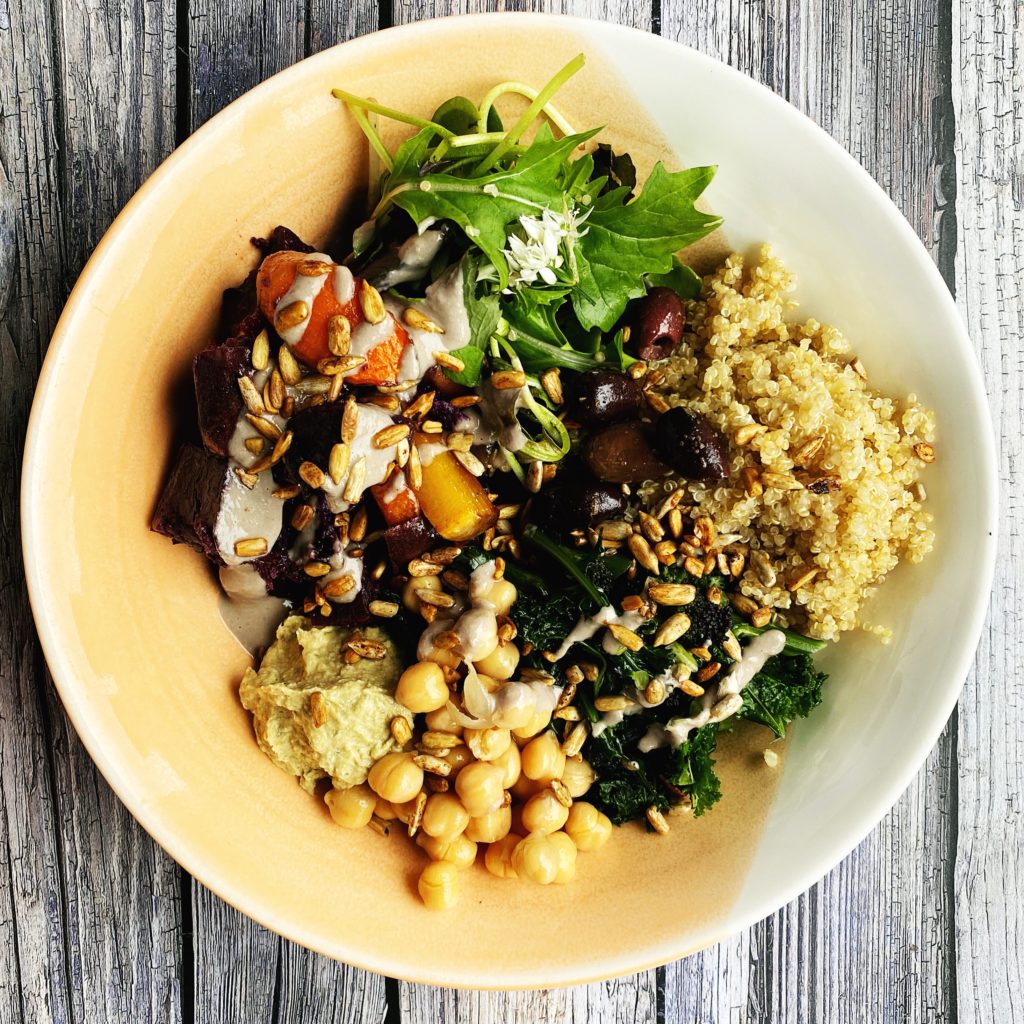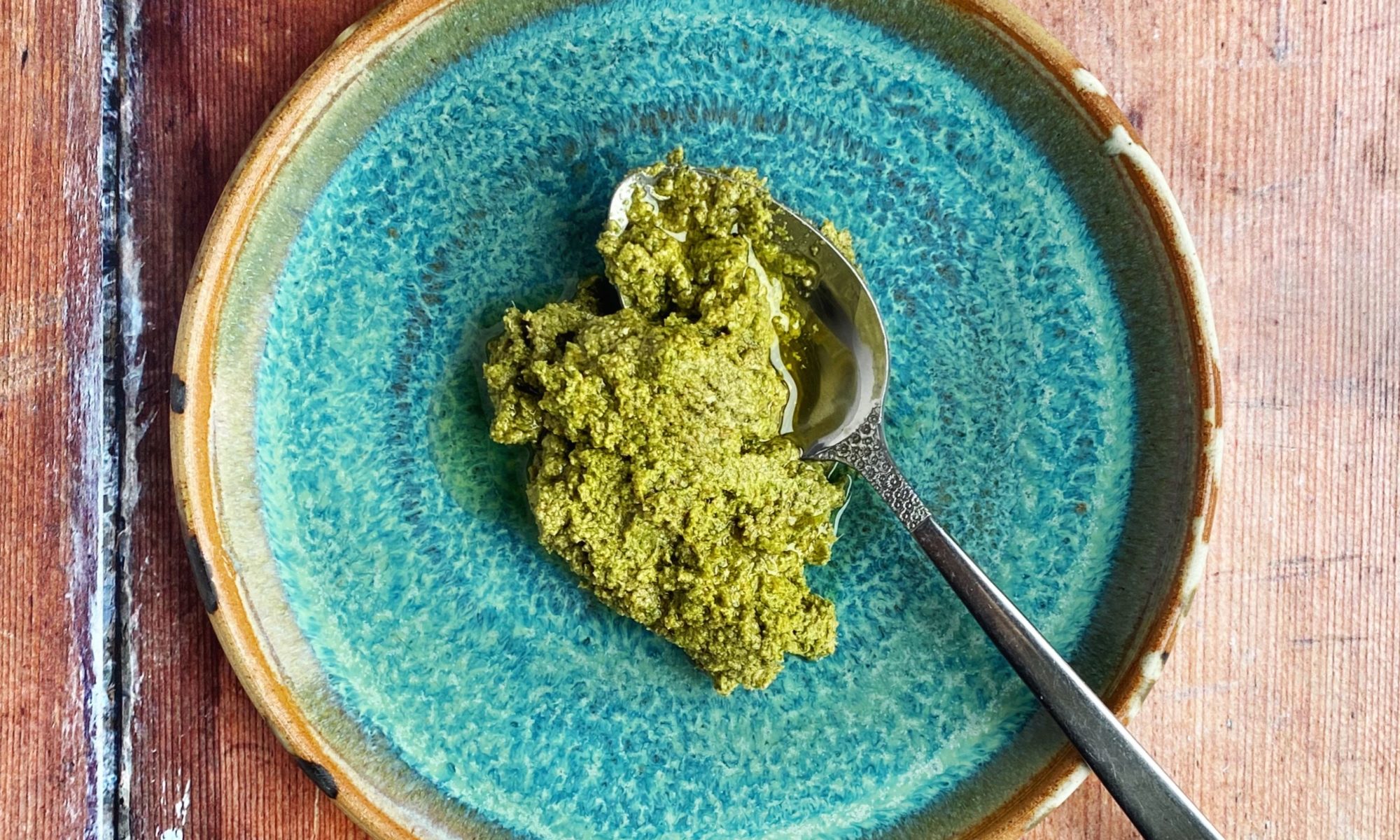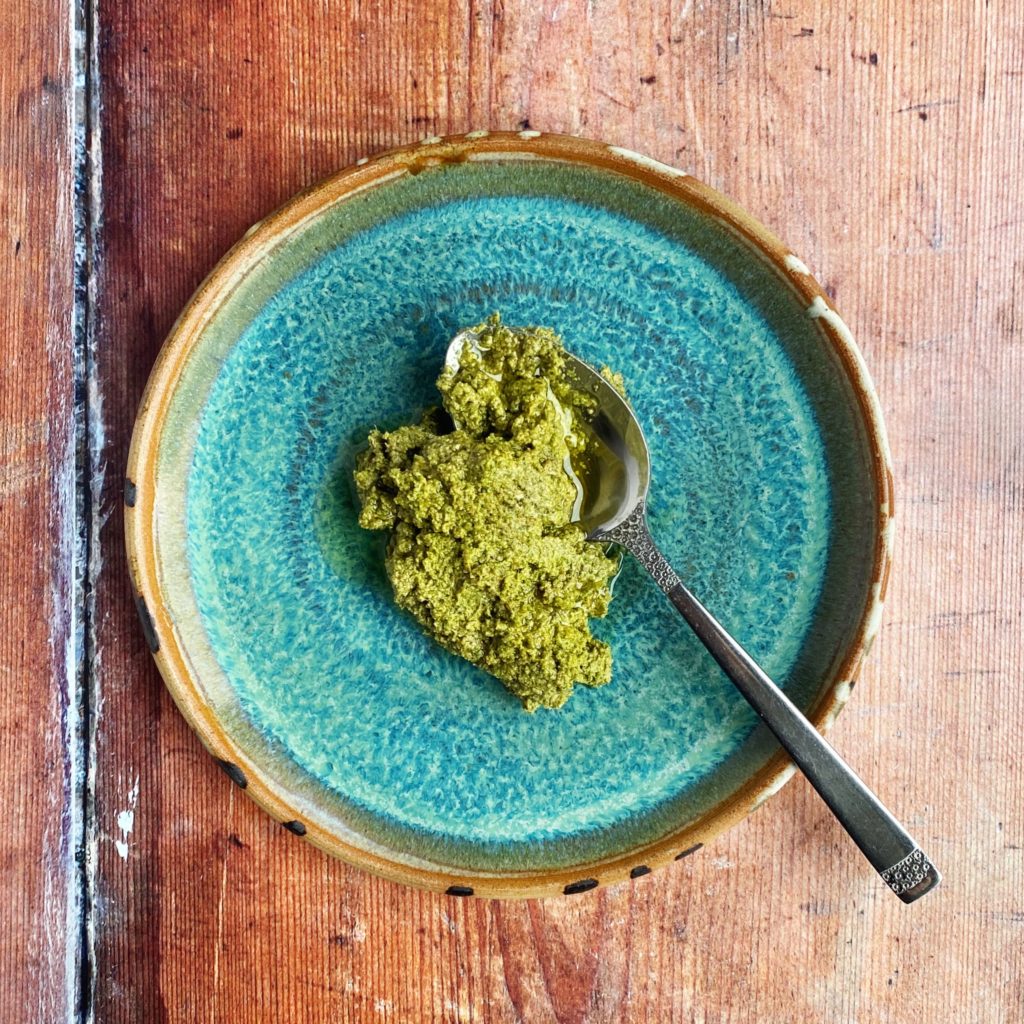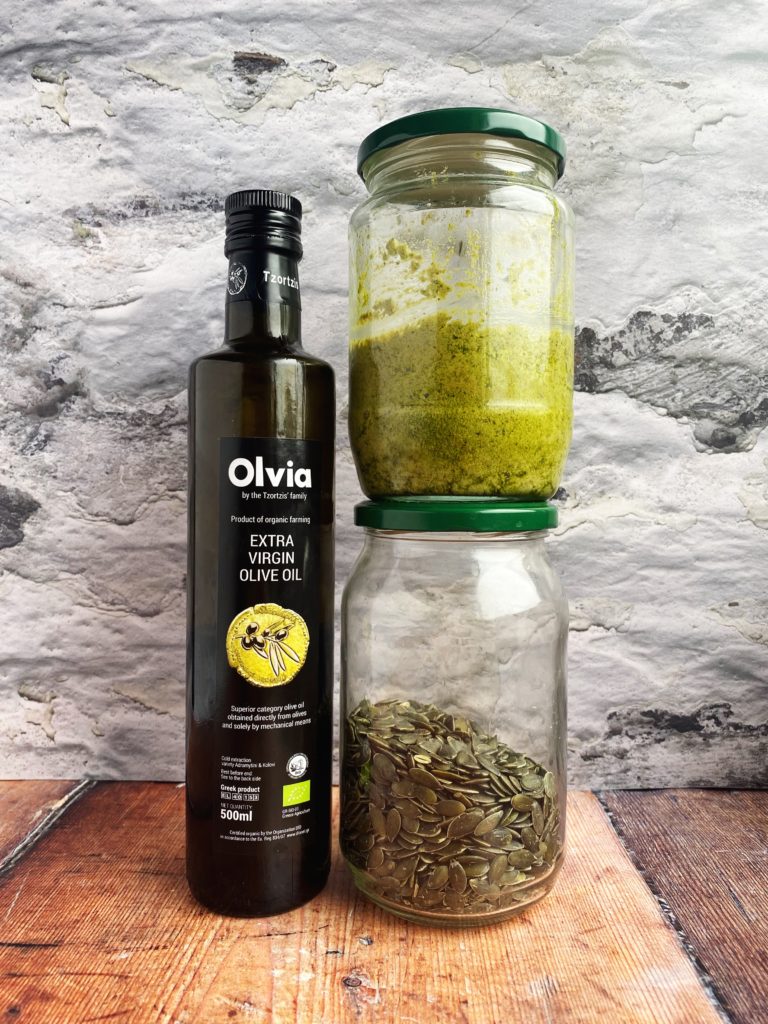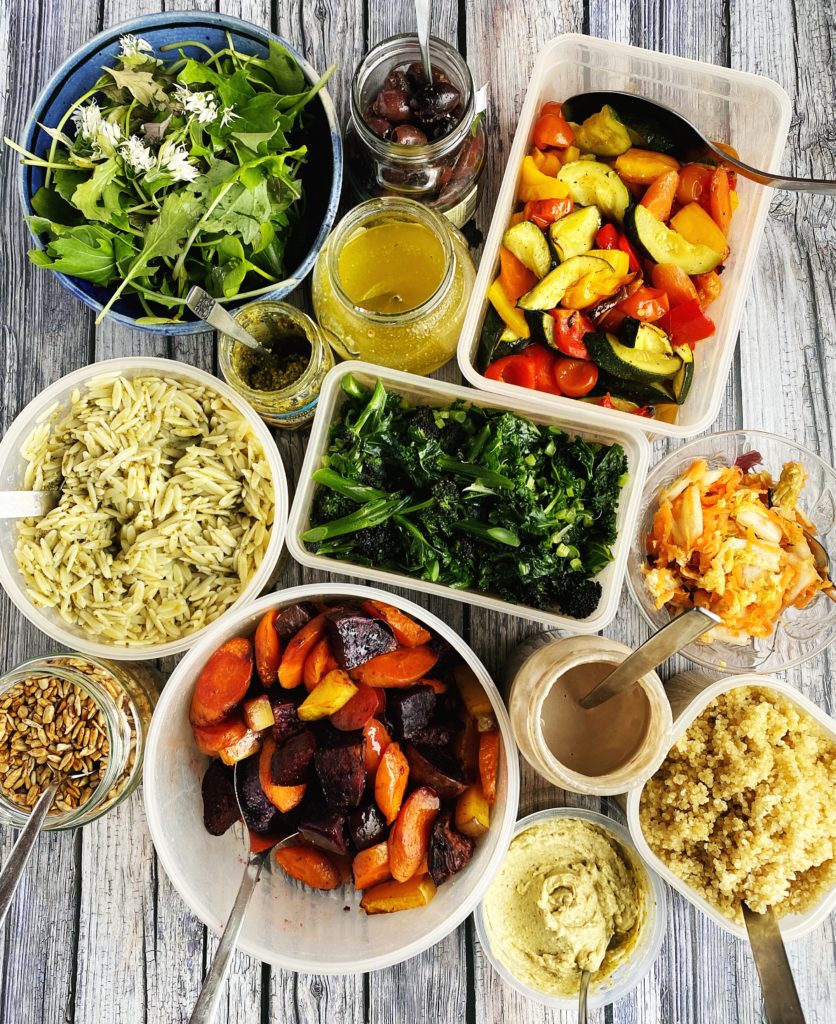
Buddha bowls are all about balance. A vibrant bowl brimming with a diverse selection of grains, pulses, greens, vegetables, nuts or seeds and delicious dressings. They are a brilliant way to build a balanced lunch or dinner from some easily prepped boxes and jars of ingredients in your fridge. To me, they are the ultimate quick-but-satisfying working lunch, and a delicious way to pack in your 30 recommended ‘plant points’ per week. Buddha bowls are basically salads dialled up to 11 and in my old life running a cafe they were always the best sellers.
Here’s my flexible ‘recipe’ of what I happened to include in this week’s buddha bowl prep. But please just use it as a basic framework, the joy of Buddha bowls is making them your own using what you have and getting creative in the kitchen. Share your amazing Buddha bowl pictures with us over on our community facebook group. We love to see what you’ve made with our wonderful organic produce (and we all need a bit of inspiration sometimes).
Liz x
Ingredients
- VEGETABLES for roasting (eg sweet potato, cauliflower, squash, beetroot, swede, parsnips, onion, carrots, peppers, aubergine, courgettes, tomatoes… whatever comes in your box)
- GREENS (eg kale, broccoli, sprouts, salad leaves, spinach, chard, cabbage…)
- GRAINS and/or PULSES (eg quinoa, chickpeas, beans, lentils, pasta, rice, barley, buckwheat, amaranth, millet, cous cous…)
- NUTS/SEEDS (eg toasted sunflower seeds, dukka, za’atar, furikaki, mixed nuts…)
- DRESSINGS (eg lemon juice and olive oil, vinaigrette, tahini sauce, pesto, harissa, soy-lime-sesame, mayonaise… try and match your dressing to the other ingredients in your bowl)
- optional extra PROTEINS (eg hummus, tofu, tempeh, falafel, cheeses…)
- extra TOPPINGS for flavour and texture (eg ferments, pickles, olives, sun-dried tomatoes, capers, chopped fresh cucumber/tomato/radish/scallions, herbs, sprouts, microgreens…)
Method
***Be realistic about how much food to prepare. Bear in mind that prepared food will stay fresh in airtight boxes in the fridge for 3 days so only make 3 days worth of food at a time.***
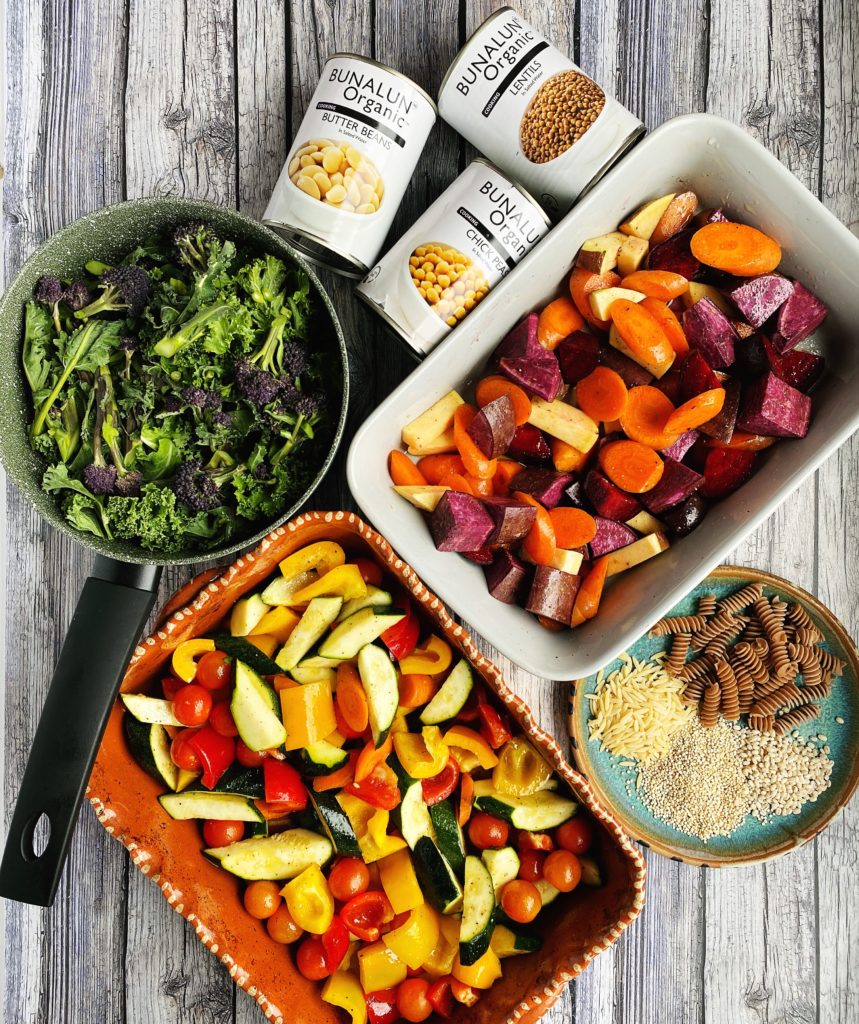
Start with roasting VEGETABLES. I like to divide mine into two trays – harder, slower cooking vegetables like roots and winter squashes in one and softer, faster cooking ‘med veg’ like peppers, tomatoes, courgettes in another.
Scrub and chop your chosen vegetables and put them into roasting trays with a little olive oil and seasoning (I like to keep the seasoning neutral with just salt and pepper at this stage so I can play with flavours when I plate up).
Roast in a hot oven until the vegetables are soft. Allow them to cool completely them pack them into boxes in the fridge.
Meanwhile cook some GRAINS/PULSES. I often cook a batch of orzo pasta (once your pasta is cooked, drain and rinse with cold water and toss with some olive oil to keep it fresh) and a batch of quinoa to get us through a few working lunches. You could skip this bit of prep and cook your grains on the day though if you’ll have time? Some warm rice with ready roasted veg and dressings is a brilliant lunch.
Or just use ready cooked tins of beans or lentils – I do this often, simply open, drain and rinse a tin of chickpeas/beans/lentils and serve with the prepped veg and dressings for the speediest lunch. We sell a range of organic tinned pulses which you can add to your veg order here.
Quinoa is very easy to cook, just like rice. Measure out a small mug into a fine sieve, give it a rinse then pop it into a small pot with two scant mugs of water. Bring to the boil with the lid on, then immediately turn to the lowest setting and let it simmer until it has absorbed all the water and released its little tails. Let the quinoa cool down before storing in an airtight container in the fridge.
Cook a big batch of GREENS. Purple sprouting broccoli and kale are my favourite at the moment and I just steam fry them in a pot with a little seasoning until they are tender. If I get salad leaves in my weekly veg box I’ll make sure I use those first as they don’t last more than 2 or 3 days.
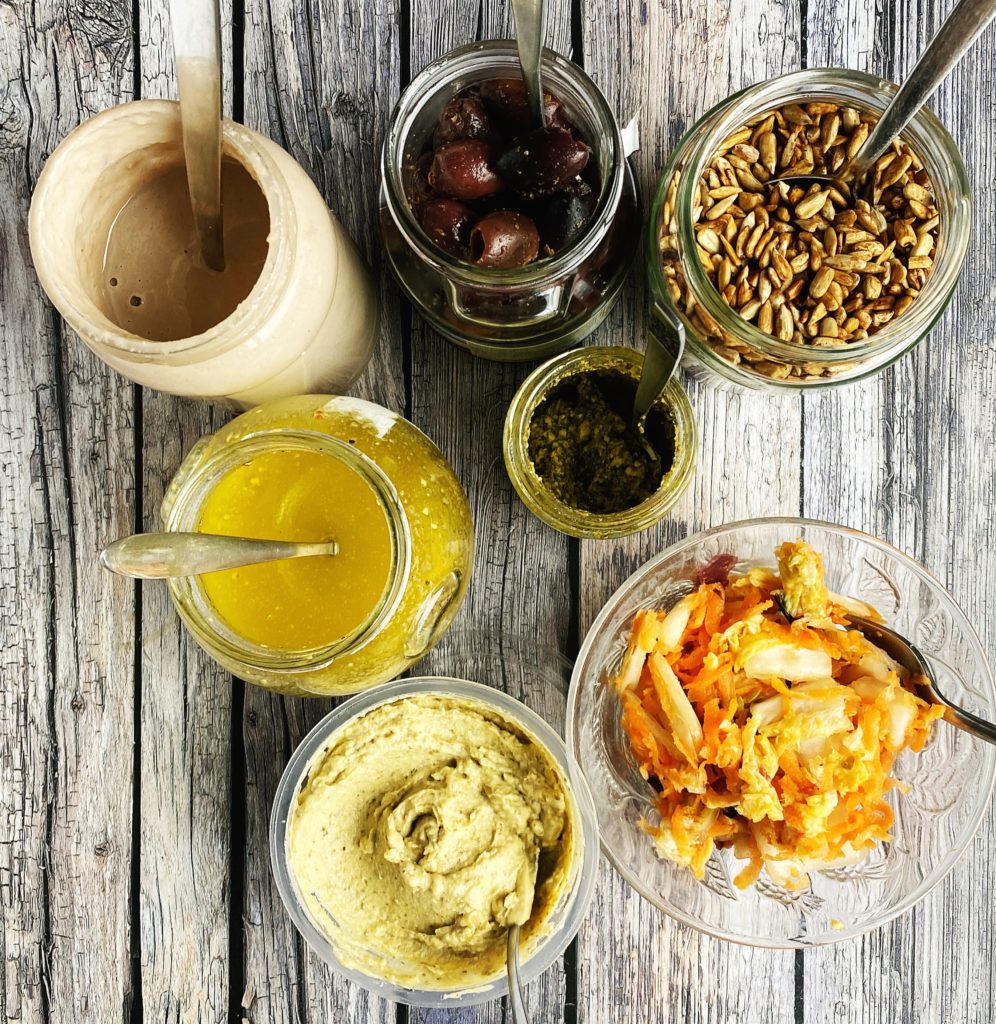
Make a couple of DRESSINGS to keep things interesting. I love a simple vinaigrette (mix 1 tbsp of vinegar or lemon juice with 3 tbsp extra virgin olive oil and add other seasonings like 1 tsp of mustard, a tiny bit of maple syrup, a pinch of salt and pepper…) or a creamy tahini sauce (mix 3 tbsp of tahini with the juice of half a lemon, a splash of water and seasoning like a pinch of salt and garlic powder). I also like to make harissa, pesto, chilli jam, aioli etc so whatever sauces/dressings I have to hand will get used in my buddha bowls.
Prepare NUTS/SEEDS, PROTEINS and extra TOPPINGS. Have a look at my tamari toasted seeds recipe here. Or simply use mixed nuts or seeds to add crunch and extra nutrition to your bowl. Keep a selection of ferments (sauerkraut, kimchi, fermented onions…), olives, pickles, sun-dried tomatoes etc to add another layer of flavour and texture to your bowls. There is already loads of protein going on in all the ingredients above, but if you like you can add even more protein to your bowls by adding a dollop of hummus, some slices of cheese, avocado, tempeh, tofu and so on.
Once you have filled your fridge with a selection of ready cooked delicious ingredients, then it’s a simple matter of building your bowl when you are hungry. I like to try and keep the flavours in a way that vaguely makes geographical or cultural sense. So I’ll have pasta, pesto, roasted med veg, olives, greens.. one day, then roasted roots, tahini dressing, chickpeas, harissa, hummus… another day. Rice, kimchi, greens, furikaki and tempeh another day. It doesn’t always work out like that with perfectly matching flavours, there have been some ‘interesting’ fusions happening, but certainly never a dull bowl!

